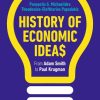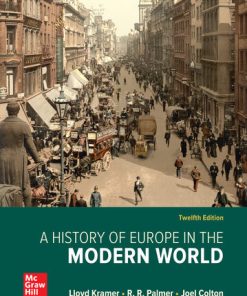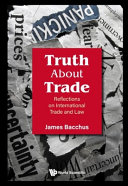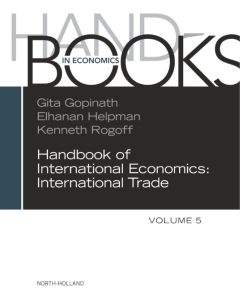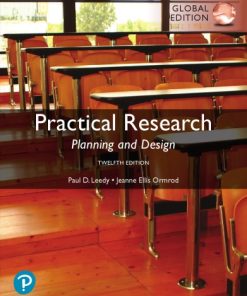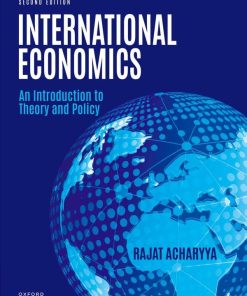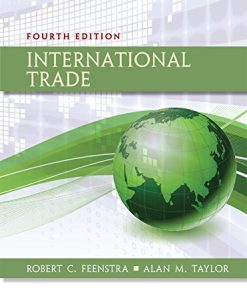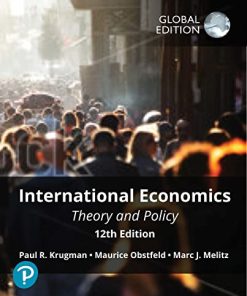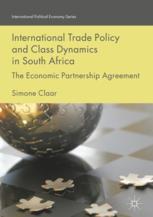(Ebook PDF) International Trade Theory and Policy Global Edition 12th edition by Paul Krugman, Maurice Obstfeld, Marc Melitz ISBN 1292417234 9781292417233 full chapters
$50.00 Original price was: $50.00.$25.00Current price is: $25.00.
(Ebook PDF)International Trade Theory and Policy Global Edition 12th edition by Paul R. Krugman, Maurice Obstfeld, Marc J. Melitz –Ebook PDF Instant Download/Delivery:1292417234, 9781292417233
Instant download Full Chapter of International Trade Theory and Policy Global Edition 12th edition after payment
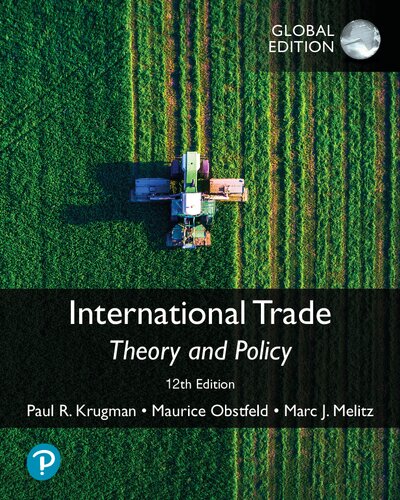
Product details:
ISBN 10: 1292417234
ISBN 13: 978-1292417233
Author: Paul R. Krugman, Maurice Obstfeld, Marc J. Melitz
For courses in International Trade.
A balanced approach to theory and policy applications
International Trade: Theory and Policy provides engaging, balanced coverage of the key concepts and practical applications of the discipline. An intuitive introduction to trade theory is followed by detailed coverage of policy applications. With this new 11th Edition, the author team of Nobel Prize-winning economist Paul Krugman, renowned researcher Maurice Obstfeld, and Marc Melitz of Harvard University continues to set the standard for International Economics texts.
Also available with MyLab Economics
MyLab™ Economics is an online homework, tutorial, and assessment program designed to work with this text to engage students and improve results. Within its structured environment, students practice what they learn, test their understanding, and pursue a personalized study plan that helps them better absorb course material and understand difficult concepts.
Note: You are purchasing a standalone product; MyLab Economics does not come packaged with this content. Students, if interested in purchasing this title with MyLab Economics, ask your instructor for the correct package ISBN and Course ID. Instructors, contact your Pearson representative for more information.
Table of contents:
Chapter 1: Introduction
-
What Is International Economics About?
-
The Gains from Trade
-
The Pattern of Trade
-
How Much Trade?
-
Balance of Payments
-
Exchange Rate Determination
-
International Policy Coordination
-
The International Capital Market
-
International Economics: Trade and Money
Part 1: International Trade Theory
Chapter 2: World Trade: An Overview
-
Who Trades with Whom?
-
Size Matters: The Gravity Model
-
Using the Gravity Model: Looking for Anomalies
-
Impediments to Trade: Distance, Barriers, and Borders
-
The Changing Pattern of World Trade
-
Has the World Gotten Smaller?
-
What Do We Trade?
-
Service Offshoring
-
Do Old Rules Still Apply?
-
Summary
Chapter 3: Labor Productivity and Comparative Advantage: The Ricardian Model
-
The Concept of Comparative Advantage
-
A One-Factor Economy
-
Production Possibilities
-
Relative Prices and Supply
-
Trade in a One-Factor World
-
Determining the Relative Price after Trade
-
Box: Comparative Advantage in Practice: The Case of Usain Bolt
-
The Gains from Trade
-
A Note on Relative Wages
-
Box: Economic Isolation and Autarky Over Time and Over Space
-
Misconceptions about Comparative Advantage
-
Productivity and Competitiveness
-
Box: Do Wages Reflect Productivity?
-
The Pauper Labor Argument
-
Exploitation
-
Comparative Advantage with Many Goods
-
Setting Up the Model
-
Relative Wages and Specialization
-
Determining the Relative Wage in the Multigood Model
-
Adding Transport Costs and Nontraded Goods
-
Empirical Evidence on the Ricardian Model
-
Summary
Chapter 4: Specific Factors and Income Distribution
-
The Specific Factors Model
-
Box: What is a Specific Factor?
-
Assumptions of the Model
-
Production Possibilities
-
Prices, Wages, and Labor Allocation
-
Relative Prices and the Distribution of Income
-
International Trade in the Specific Factors Model
-
Income Distribution and the Gains from Trade
-
The Political Economy of Trade: A Preliminary View
-
The Politics of Trade Protection
-
Trade and Unemployment
-
Case Study: U.S. Manufacturing Employment and Chinese Import Competition
-
Box: The Trump Trade War
-
International Labor Mobility
-
Case Study: Immigration and the U.S. Economy
-
Summary
Appendix to Chapter 4: Further Details on Specific Factors
-
Marginal and Total Product
-
Relative Prices and the Distribution of Income
Chapter 5: Resources and Trade: The Heckscher-Ohlin Model
-
Model of a Two-Factor Economy
-
Prices and Production
-
Choosing the Mix of Inputs
-
Factor Prices and Goods Prices
-
Resources and Output
-
Effects of International Trade between Two-Factor Economies
-
Relative Prices and the Pattern of Trade
-
Trade and the Distribution of Income
-
Case Study: North-South Trade and Income Inequality
-
Skill-Biased Technological Change and Income Inequality
-
Box: The Declining Labor Share of Income and Capital-Skill Complementarity
-
Factor-Price Equalization
-
Empirical Evidence on the Heckscher-Ohlin Model
-
Trade in Goods as a Substitute for Trade in Factors: Factor Content of Trade
-
Patterns of Exports between Developed and Developing Countries
-
Implications of the Tests
-
Summary
Appendix to Chapter 5: Factor Prices, Goods Prices, and Production Decisions
-
Choice of Technique
-
Goods Prices and Factor Prices
-
More on Resources and Output
Chapter 6: The Standard Trade Model
-
A Standard Model of a Trading Economy
-
Production Possibilities and Relative Supply
-
Relative Prices and Demand
-
The Welfare Effect of Changes in the Terms of Trade
-
Box: U.S. Consumer Gains from Chinese Imports
-
Determining Relative Prices
-
Economic Growth: A Shift of the RS Curve
-
Growth and the Production Possibility Frontier
-
World Relative Supply and the Terms of Trade
-
International Effects of Growth
-
Case Study: Has the Growth of Newly Industrialized Economies Hurt Advanced Nations?
-
Box: The Exposure of Developing Countries to Terms of Trade Shocks and the COVID-19 Pandemic
-
Tariffs and Export Subsidies: Simultaneous Shifts in RS and RD
-
Relative Demand and Supply Effects of a Tariff
-
Effects of an Export Subsidy
-
Implications of Terms of Trade Effects: Who Gains and Who Loses?
-
International Borrowing and Lending
-
Intertemporal Production Possibilities and Trade
-
The Real Interest Rate
-
Intertemporal Comparative Advantage
-
Summary
Appendix to Chapter 6: More on Intertemporal Trade
Chapter 7: External Economies of Scale and the International Location of Production
-
Economies of Scale and International Trade: An Overview
-
Economies of Scale and Market Structure
-
The Theory of External Economies
-
Specialized Suppliers
-
Labor Market Pooling
-
Knowledge Spillovers
-
External Economies and Market Equilibrium
-
External Economies and International Trade
-
External Economies, Output, and Prices
-
External Economies and the Pattern of Trade
-
Trade and Welfare with External Economies
-
Box: Holding the World Together
-
Dynamic Increasing Returns
-
Interregional Trade and Economic Geography
-
Box: The City and the Street
-
Summary
Chapter 8: Firms in the Global Economy: Export and Foreign Sourcing Decisions and Multinational Enterprises
-
The Theory of Imperfect Competition
-
Monopoly: A Brief Review
-
Monopolistic Competition
-
Monopolistic Competition and Trade
-
The Effects of Increased Market Size
-
Gains from an Integrated Market: A Numerical Example
-
The Significance of Intra-Industry Trade
-
Case Study: Automobile Intra-Industry Trade within ASEAN-4: 1998–2002
-
Firm Responses to Trade: Winners, Losers, and Industry Performance
-
Performance Differences across Producers
-
The Effects of Increased Market Size
-
Trade Costs and Export Decisions
-
Dumping
-
Case Study: Antidumping as Protectionism
-
Multinationals and Foreign Direct Investment
-
Patterns of Foreign Direct Investment Flows around the World
-
Case Study: COVID-19 and Foreign Direct Investment Flows around the World
-
Foreign Direct Investment and Foreign Sourcing Decisions
-
The Horizontal FDI Decision
-
The Foreign Sourcing Decision
-
The Outsourcing Decision: Make or Buy
-
Box: Whose Trade Is It?
-
Case Study: Shipping Jobs Overseas? Offshoring and Labor Market Outcomes in Germany
-
Consequences of Multinationals and Foreign Outsourcing
-
Summary
Appendix to Chapter 8: Determining Marginal Revenue
Part 2: International Trade Policy
Chapter 9: The Instruments of Trade Policy
-
Basic Tariff Analysis
-
Supply, Demand, and Trade in a Single Industry
-
Effects of a Tariff
-
Measuring the Amount of Protection
-
Costs and Benefits of a Tariff
-
Consumer and Producer Surplus
-
Measuring the Costs and Benefits
-
Case Study: Winners and Losers of the Trump Trade War
-
Box: Tariffs and Retaliation
-
Other Instruments of Trade Policy
-
Export Subsidies: Theory
-
Box: The Unfriendly Skies: Settling the Longest Running Trade Dispute
-
Import Quotas: Theory
-
Case Study: Tariff-Rate Quota Origin and its Application in Practice with Oilseeds
-
Voluntary Export Restraints
-
Local Content Requirements
-
Box: Healthcare Protection with Local Content Requirements
-
Other Trade Policy Instruments
-
The Effects of Trade Policy: A Summary
-
Summary
Appendix to Chapter 9: Tariffs and Import Quotas in the Presence of Monopoly
-
The Model with Free Trade
-
The Model with a Tariff
-
The Model with an Import Quota
-
Comparing a Tariff and a Quota
Chapter 10: The Political Economy of Trade Policy
-
The Case for Free Trade
-
Free Trade and Efficiency
-
Additional Gains from Free Trade
-
Rent Seeking
-
Political Argument for Free Trade
-
National Welfare Arguments against Free Trade
-
The Terms of Trade Argument for a Tariff
-
The Domestic Market Failure Argument against Free Trade
-
How Convincing Is the Market Failure Argument?
-
Income Distribution and Trade Policy
-
Electoral Competition
-
Collective Action
-
Box: Politicians for Sale: Evidence from the 1990s
-
Modeling the Political Process
-
Who Gets Protected?
-
International Negotiations and Trade Policy
-
The Advantages of Negotiation
-
International Trade Agreements: A Brief History
-
The Uruguay Round
-
Trade Liberalization
-
Administrative Reforms: From the GATT to the WTO
-
Benefits and Costs
-
Box: Settling a Dispute—and Creating One
-
Case Study: Testing the WTO’s Metal
-
The End of Trade Agreements?
-
Box: Do Agricultural Subsidies Hurt the Third World?
-
Preferential Trading Agreements
-
Box: Free Trade Area Versus Customs Union
-
Box: Brexit
-
Case Study: Trade Diversion in South America
-
The Trans-Pacific Partnership
-
Summary
Appendix to Chapter 10: Proving That the Optimum Tariff Is Positive
-
Demand and Supply
-
The Tariff and Prices
-
The Tariff and Domestic Welfare
Chapter 11: Trade Policy in Developing Countries
-
Import-Substituting Industrialization
-
The Infant Industry Argument
-
Promoting Manufacturing through Protection
-
Case Study: Export-Led Strategy
-
Results of Favoring Manufacturing: Problems of Import-Substituting Industrialization
-
Trade Liberalization since 1985
-
Trade and Growth: Takeoff in Asia
-
Box: India’s Boom
-
Summary
Chapter 12: Controversies in Trade Policy
-
Sophisticated Arguments for Activist Trade Policy
-
Technology and Externalities
-
Imperfect Competition and Strategic Trade Policy
-
Box: A Warning From Intel’s Founder
-
Case Study: When the Chips Were Up
-
Globalization and Low-Wage Labor
-
The Anti-Globalization Movement
-
Trade and Wages Revisited
-
Labor Standards and Trade Negotiations
-
Environmental and Cultural Issues
-
The WTO and National Independence
-
Case Study: A Tragedy in Bangladesh
-
Globalization and the Environment
-
Globalization, Growth, and Pollution
-
The Problem of “Pollution Havens”
-
The Carbon Tariff Dispute
-
Trade Shocks and Their Impact on Communities
-
Summary
Mathematical Postscripts
Postscript to Chapter 5: The Factor-Proportions Model
-
Factor Prices and Costs
-
Goods Prices and Factor Prices
-
Factor Supplies and Outputs
Postscript to Chapter 6: The Trading World Economy
-
Supply, Demand, and Equilibrium
-
Supply, Demand, and the Stability of Equilibrium
-
Effects of Changes in Supply and Demand
-
Economic Growth
-
A Transfer of Income
-
A Tariff
Postscript to Chapter 8: The Monopolistic Competition Model
-
Merchandise Trade Flows with the United States (in 2018 U.S. dollars)
-
Gross National Product per Capita (in 2019 U.S. dollars)
People also search:
up international trade show
importance of international trade
yiwu international trade city
theories of international trade
india international trade fair tickets
You may also like…
History - European History
Uncategorized
Business & Economics - Economics
Handbook of International Economics: International Trade Vol. 5 1st Edition
Business & Economics - Mathematical Economics
Politics & Philosophy - Social Sciences
Practical Research: Planning And Design, 12th Global Edition Paul D. Leedy
Uncategorized
International Economics: An Introduction to Theory and Policy 2nd Edition Rajat Acharyya
Uncategorized
Business & Economics
Politics & Philosophy - Government & Politics


